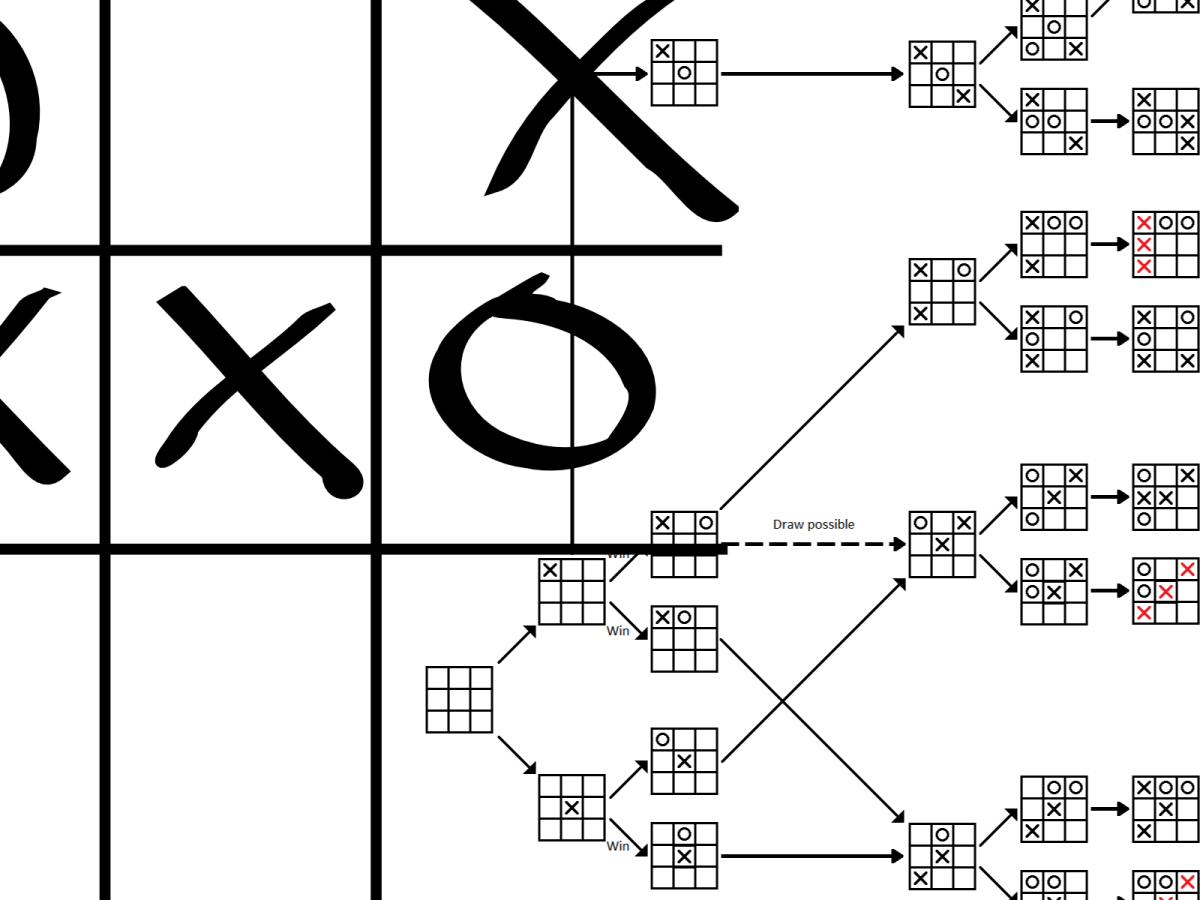
ARC is a game about a world. That world might be a small island in an endless sea. It could be an entire galaxy. It can be any world you want, but no matter which you choose, its fate will be uncertain at best.
ARC is a game about heroes. They may be legendary warriors vying against epic villains. They may be neighborhood kids looking for a lost dog. No matter who they are, they share a single purpose: to save their world from almost-certain doom.
ARC is their story.
A Handbook to Doom
The first thing you’ll notice about ARC the book is that it’s gorgeous.
Every page exudes style and craft. The abundant typefaces harmonize well with each other and with the other visual elements in each spread. The illustrations run the gamut from somber to lighthearted to enigmatically symbolic, visually reinforcing ARC’s adaptability.
No description of ARC’s visual character can do justice to how artful it really is. It’s a book you must experience in print to truly appreciate. For this review, I’ve tried to select images that best illustrate the visual diversity and underlying proficiency.
But aesthetic appeal alone doesn’t make a good RPG.
ARC welcomes novice players and encourages new GMs (called Guides), but it’s easy for veterans to pick up and enjoy. The game’s structure supports nearly any type of theme the players want to pursue. The mechanics are functionally genre-agnostic and can accommodate a huge variety of settings.
The book is organized into 5 chapters. The first four cover character creation and mechanics, and the last provides a suite of Guide tools and advice. Each chapter is marked by staggered, colored tabs that bleed to the pages’ edges, making it easy to flip quickly to any given section.
ARC’s rules are pretty light, but at the granular scale, they are a bit complex. This isn’t a bad thing—it makes the game robust and versatile. But at least during the first session, you’ll probably find yourself flipping and referencing. The color-coded chapter tabs are handy.

ARC also has 6 appendices containing examples of the game’s major processes plus the Codex of Astonishing Creatures. All these appendices provide useful illustrations of how the mechanics work, and the Codex offers a wide variety of NPCs/adversaries that Guides can use, adapt, or reference. Between the Codex and the table for adversary creation, Guides can craft unique beings in a matter of minutes and populate a game in an afternoon.
Beyond the book itself, the ARC website provides some handy tools. One is a quick-start guide, which serves as a useful primer and reference at the table. Another is an Omen generator, which is great if you don’t have a story in mind but you really want to start playing ARC (and trust me, you will).
Last but not least, there’s an interactive character sheet that’s so well-crafted that you’d never suspect it was made using Google Sheets. The printable version is distinct but equally well organized and lovely to look at. Both incorporate rules references and other information to support the players at the table.
Versatility in the Face of Annihilation
Characters are built on skills and approaches. The 18 skills fall into five broad categories, and heroes use those skills through three approaches, which represent exactly how the character uses that skill: carefully, concertedly, or creatively. Together, skills and approaches form a fun and versatile core mechanic.
The next crucial character attributes are Blood and Guts. These soak damage (physical and mental, respectively), or they can be spent for re-rolls. This dual functionality makes them more nuanced and consequential resources to manage than the standard discrete point pools often found in RPGs.

ARC is classless, but characters can acquire special powers through spells and techniques. Spells are self-explanatory; techniques are less arcane but still extraordinary abilities characters may possess. Spells and techniques have basic and enhanced versions characters can use, and an intuitive complexity rating helps Guides and players develop their own.
For enhanced spells, techniques, or any other action, players choose a skill and an approach, add their values, apply any situational modifiers, and roll a d6. But they may not simply pass or fail, since ARC uses grades of success. These range from pure success (and in some cases success with opportunity) to success with consequence, failure with opportunity, or pure failure.
Overall, ARC elegantly creates complexity that’s both manageable and meaningful. Its core system moves beyond making a single roll to determine a yes-or-no outcome and instead gives players and Guides more room to explore possibilities and solve problems creatively.
And solve problems creatively they must, because heroes constantly compete against a single, inexorable enemy: the Doomsday Clock.
The Narrative Arc

The Doomsday Clock—modeled on the Doomsday Clock created by the Bulletin of the Atomic Scientists—is ARC’s centerpiece. This mechanic counts down to the impending (but not inevitable) catastrophe threatening the heroes’ world.
Whatever type of Doom the heroes face, its approach is heralded by Omens, which are smaller narrative arcs that build up to the Doom itself. Each unresolved Omen speeds the clock’s advance, so proactive players can buy themselves some breathing room, whereas more adversity-stricken heroes will grapple with a dramatic time crunch toward the end.
Together, the Doom and Omens establish clear, connected objectives and consequences. These go a long way to creating a visible narrative arc in the game, and players’ capacity to affect the plot or suffer the consequences can create greater immersion and investment. It’s a marvelously elegant and meaningful mechanic for play.
Obviously, ARC didn’t invent escalating events and a ticking clock; the first is a fundamental structure for well-crafted stories, and the latter is a common method of creating and building narrative tension. But ARC doubles that tension by taking the clock out of game time and into real time.
Clock Time
The Doomsday Clock’s countdown proceeds in real hours and minutes, and that’s why ARC recommends a stopwatch as an important game material. Depending on the desired game length—one-shot, two to three sessions, or many sessions—the clock will advance at different intervals.
But that countdown isn’t the only thing that proceeds in real time. Experience is also earned based on clock time, not in-game milestones, and players can bank it or spend it whenever and however they want.
But although the clock giveth, the clock also taketh away. Whenever characters rest to recover, the players must take a few-minute break from the game. And the Doomsday Clock does not stop ticking. This truly unstoppable advance puts pressure on players to weigh the benefits of rest with the risk of running out of time to complete their goals.
The Character Arc

The heroes’ goals are clearly demarcated and visible, making them easy to manage and pursue. But stories are about more than just overcoming external obstacles; they’re just as much—if not more so—about how those events affect the characters themselves, how people change and develop over time.
An important component of that growth is a character’s relationship to the others around them. ARC quantifies heroes’ relationships through bonds, which can be major or minor.
When one hero assists another, the assisted heroes’ roll is improved by the number of major bonds they have with the other. There are three levels of major bonds, and achieving each level requires increasingly greater sacrifice. Altogether, major bonds reflect the strength of the characters’ connections and their ability to support one another in adversity.
Each major bond is a unit of four minor bonds, which players can spend to allow the other character to re-roll any die. Together with major bonds, they represent the dynamic nature of heroes’ relationships with each other.
Open Endings
All good tales depend on challenges and uncertain outcomes. If we know the heroes will triumph, and how, the game isn’t as interesting and engaging. Protagonists must always face the threat of failure, or their stories won’t be compelling.
As in most RPGs, characters in ARC can die, but the game features plenty of safety valves. When Blood, Guts, and approaches reach zero, a character may die—but they may not either. A player can choose to let their hero fall, in which case their allies gain major bonds, or they have the option of surviving (up to six times) with severe, lasting consequences.
But death isn’t the only threat. The larger, overarching danger is the Doom they’re fighting—and possibly dying—to stop. Failing to do so isn’t necessarily the end, though.
One option is rewinding to the final moment on the clock. But like reviving a downed hero, this carries haunting consequences for the protagonists.
Another option is to accept defeat. The Doom occurs, but it isn’t necessarily the end of the world. It doesn’t have to be a global cataclysm; ARC provides several examples that are smaller in scale but nonetheless world-shattering to the people concerned. But even after a large-scale disaster, life can continue.
Win or lose, new challenges may arise. New Dooms can threaten the world, and ARC holds open the possibility for longer campaigns in which more Dooms function the same way Omens do within individual Dooms. Larger stories can emerge, and the heroes can grow in stature and power to inhabit them.
The Final Word
ARC delivers a big experience in a lean, creative system. The heroes are straightforward but versatile. The Doom Clock creates legitimate tension. The mechanics can yield some unexpected outcomes. The resources are economized to support players. And it’s all conveyed in a delightful little book that you’ll return to again and again not because you need to look at it but because it’s beautiful and inspiring to behold.

ARC is available from Exalted Funeral. Momatoes’ other work is available at itch.io.
Liber Ludorum is entirely reader-funded. Please consider lending your support.
Recent posts
Breakout Con ’24: a retrospective
Impressions of Canada’s largest tabletop gaming convention
Tabula Rasa: a (p)review
An exclusive first look at the groundbreaking rules-minimalist, experience-maximalist TTRPG
Games & Systems
The tradeoff between flexibility and direction, and the pitfalls of thinking about both




